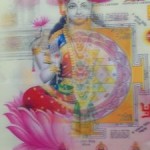Book review: More than Real: A History of the Imagination in South India
When I began my commentarial series on Saundaryalahari I quickly realised that I’d have to give myself a ‘crash course’ in Indian poetics. This led me into pondering the relationship between imagination, visualisation, speech, metaphor and ritual production. Unlike western philosophies, which tend to a hard distinction between the imaginary and the “real”; between mental cognition and objective truth, the imagination has a central place in Indian philosophy and religion. There are many accounts of yogis, for example, who are able to directly transform reality by the power of their minds; similarly many tantric texts stress the capacity and power of internal ritual exclusively. The Cidvilāsastava for example, is a 40-verse text detailing the mental worship of the goddess Tripurā. Continue reading »

